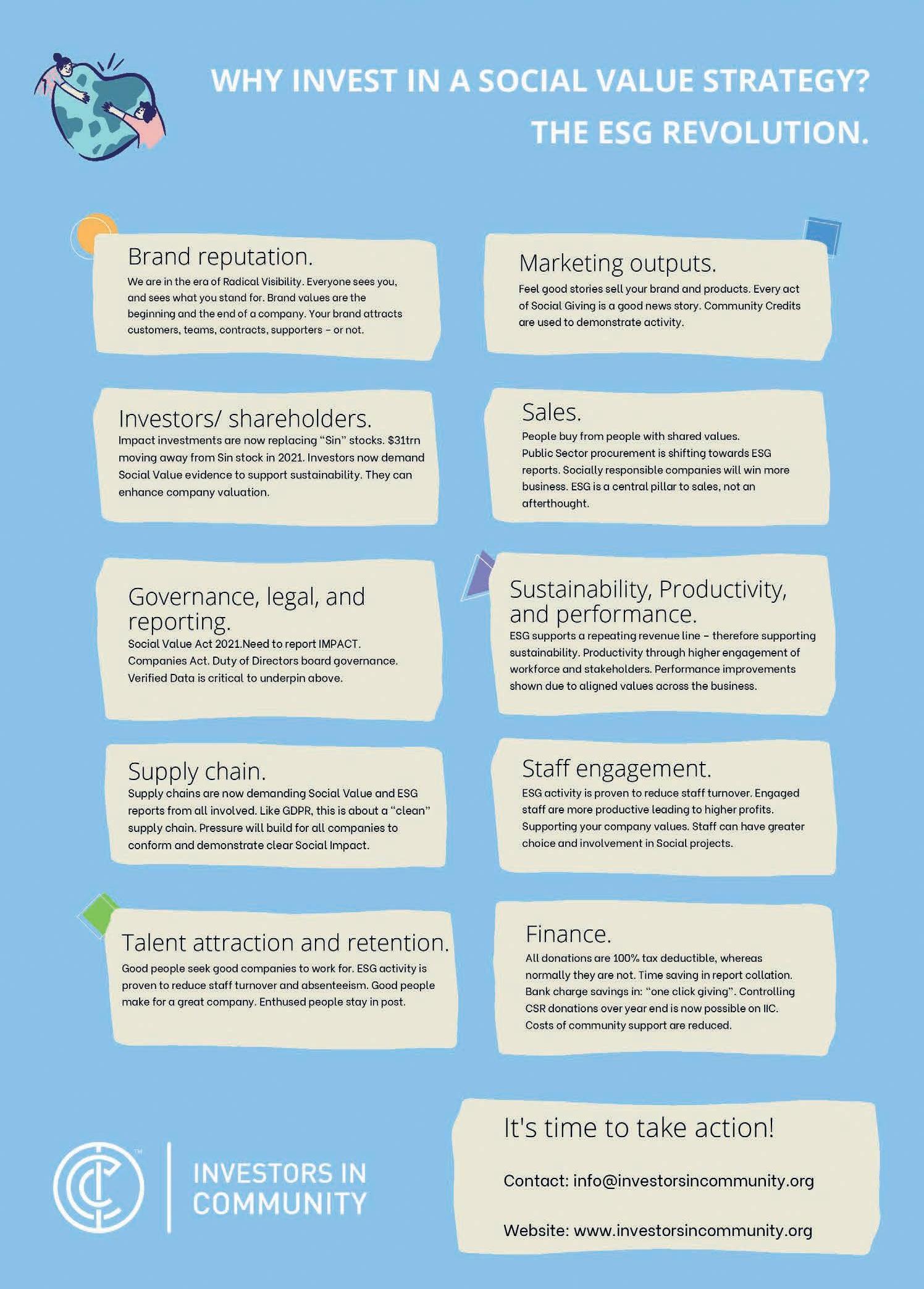
11 minute read
FOCUS FEATURE
The logistical challenges of a growing industry
The logistics industry was already growing in line with the explosion of e-commerce before the pandemic, but it has truly come of age over the past 15 months as people have come to know their delivery drivers and a raft of jobs have been created in increasingly visible warehouses. It presents some great opportunities for the East Midlands if it can overcome challenges, as Dan Robinson reports.
It used to be the person bringing Ringtons tea, the
milkman or the teenagers on their early morning paper round. Now, it’s the Amazon and dpd delivery drivers – bringing groceries, clothes, electronics, home furnishings and medicines – who many of us are on first-name terms with.
Their arrival on our doorstep is the result of a journey that began with a few website clicks, but operating behind the scenes is a logistics industry that is undergoing rapid transformation and fast becoming a titan of the UK economy.
“So many people were forced to divert to online shopping and e-commerce sales have gone through the roof,” says Gwyn Stubbings, planning director at GLP, one of Europe’s leading developers and operators of logistics real estate.
“It was the logistics industry that enabled this to happen and there’s been a huge reliance on it to perform incredibly well to keep the country going.
“As a lot of businesses are now having to adapt online, demand will only continue to grow.”
While these trends existed pre-pandemic – the online proportion of total retail sales grew from 6.2% in 2009 to 19.2% in 2019 – the lockdown impact was stark, with a sharp increase to 27.9% in 2020, according to the Office for National Statistics (ONS).
Even as the reopening of the economy is likely to stabilise these numbers, the trajectory will continue upwards, while the onshoring effect of Brexit will also likely contribute to increased demand. THE EAST MIDLANDS, located within the so-called “golden triangle” that is within a four-hour drive of about 95% of the UK population, already has a headstart on many other regions.
The airport’s reputation as the busiest pure cargo hub for air travel in the country has activated a wave of development up and down the M1, while the neighbouring 700-acre SEGRO Logistics Park East Midlands Gateway is now home to powerhouse brands including Amazon, Nestle, Shop Direct, Games Workshop and Kuehne+Nagel.
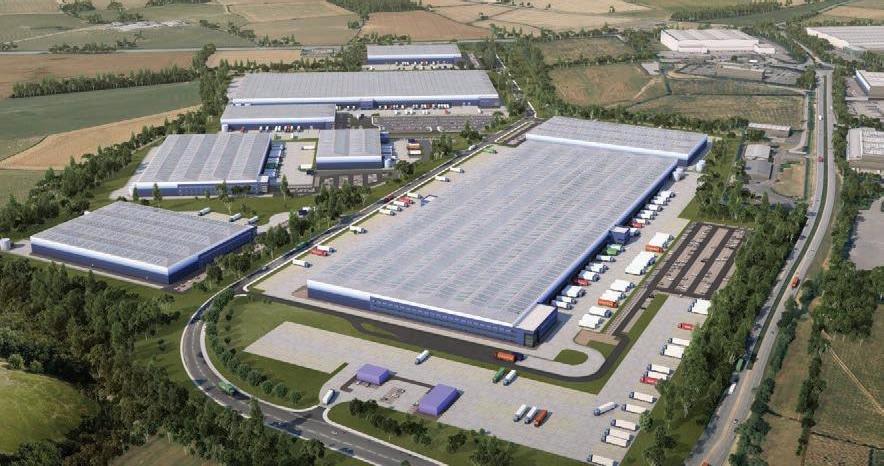
Magna Park Lutterworth is billed as Europe's premier logistics park
Gwyn Stubbings, planning director at GLP
% 30
INTERNET SALES AS A PERCENTAGE OF TOTAL RETAIL SALES (%)
20
10
0
Tritax Symmetry planning director Jonathan Dawes (top) and development director Alex Reynolds
IDENTIFYING THE FUTURE SKILLS THE INDUSTRY NEEDS
Lorry driving and digital “At the same time, employers increasingly want ‘Tsavviness are the biggest shaped’ supply chain professionals who understand all skills needs for the elements, from procurement and customer service logistics industry, through to automation and operations, so there’s a much believes the head of a more complex range of skills needed. college that’s opening a “It’s a smooth-running process that starts with a dedicated new training brand’s website and ends up on your doorstep, so in the and research centre. future, people will have to work across multiple functions
Marion Plant OBE FCGI, and be strategic thinkers. principal and chief “We want to inspire young people but there’s also a executive at North massive emphasis on retraining for those already Warwickshire and South working in the industry.” Leicestershire College Marion Plant OBE FCGI To help prepare today’s and tomorrow’s workforce, (NWSLC), says softer skills NWSLC has joined forces with GLP, logistics provider are also desperately Wincanton and Aston University to set up CLEAR, which required as the sector faces having to plug huge gaps to will offer skills training and professional development at meet rapid e-commerce growth. all levels across the spectrum of logistics and supply
The college is working in collaboration with industry chain roles. and higher education partners to launch the new Centre The training centre, which will initially be based at for Logistics Education and Research (CLEAR) at Magna Bittesby House in the Magna Park northern extension Park Lutterworth. when it opens in July before moving to a bespoke facility
“Digital skills are the biggest skills gaps at all levels,” within the broader logistics park development, will says Marion. “There’s a huge requirement for upskilling eventually accommodate 1,000 students along with within the industry because so much of the processes will applied research facilities. be automated. Unless employees are tuned into aspects Marion adds: “By locating it on Magna Park, the such as cloud logistics, machine learning, big data, tenants can see the training hub and buy into it more internet of things and web design, they won’t have jobs. easily, while the students also benefit from an immersive
“More immediately, there’s a huge shortage of HGV experience they wouldn’t necessarily get on a traditional drivers, particularly post-Brexit, with about 60,000 college campus.” people needed.”
ONS figures show 1.57 million people – 4.8% of the UK workforce – are employed in “transport and storage”.
In 2014, the UK Commission for Employment and Skills forecast another 1.2 million people would need to be recruited in logistics by 2022 to meet growth projections, with the main skills gaps being technical, practical or job-specific – such as organisation, customer-handling, leadership, problem-solving, multi-tasking and communication. There’s clearly much work ahead as a 2019 report by the Chartered Institute of Logistics and Transport found more than half (54%) of logistics firms anticipated skills shortages.
“It’s a breadth of skills,” adds Marion. “As a result of the pandemic and our dependence on deliveries for online shopping, logistics has become so much more visible and there’s a new sense of valuing the industry.

Magna Park Lutterworth, meanwhile, is one of the largest distribution parks in Europe. Built on a former RAF airfield in 1987, it has expanded vastly since Asda made the site its main distribution hub at the outset.
The 550-acre development now comprises 27 companies, with Toyota, BT, Disney, Britvic and DHL joining Asda across 37 buildings with a floor space exceeding 10 million sq ft.
Gwyn, whose company GLP has operated and developed the park, says: “Its success has been built around the strategic location within the golden triangle.
“There wasn’t really anything of its nature previously – we had traditional industrial parks but with storage and distribution was just one element – so Magna Park has been a blueprint for the dedicated logistics parks we see today.”
Furniture retailer Wayfair recently moved into a warehouse exceeding a million sq ft, while the market is so strong that GLP speculatively built four more units on its southern extension. Three have already been let – one of the occupiers is a pharma company that’s distributing a Covid-19 vaccine – and the other is under offer.
“The average building at Magna Park is about 200,000 sq ft but we’re seeing more demand for much bigger units, which is why one of the speculative builds is 750,000 sq ft.
“It allows businesses to future-proof their operations and grow into them, rather than have to move somewhere else midway through their lease.”
LAST YEAR WITNESSED the logistics industry’s highest ever recorded take-up of warehouse space, at 504 million sq ft, according to Property Week’s latest industrial and logistics census – which also found 41% of occupiers expect they’ll need more space within two years.
But land supply remains a major barrier. GLP has planning permission to build another five warehouses at Magna Park, which would take its floorspace to 16 million sq ft and headcount to 15,000, but thereafter it would have to navigate the complex British planning system to expand further.
“There’s obviously challenges because bigger buildings are more land-hungry,” says Gwyn. “If you’re a council and decide to allocate 300 acres of land for future employment needs, a big warehouse could take 50 acres in one hit.
“So we need to work with local authorities to forecast these trends and pre-empt them, rather than be forced into being reactive or having to settle for sub-optimal locations.
Modern warehouses are now equipped with robots
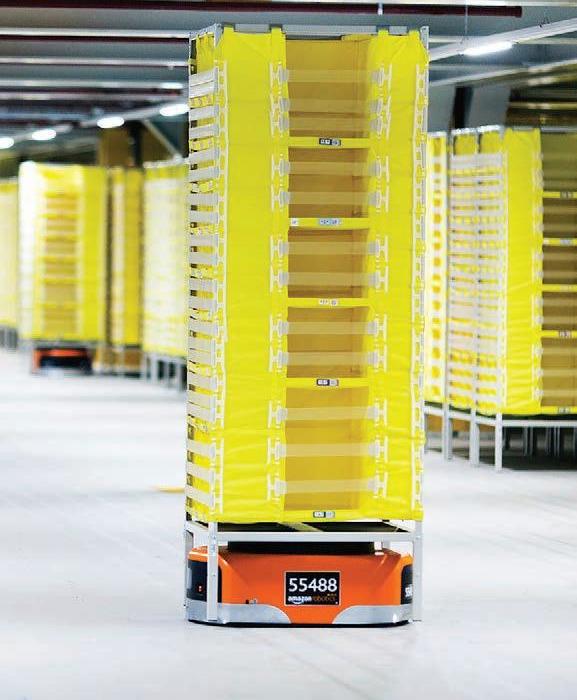
“Ultimately, if we don’t have the land supply then businesses will go elsewhere.”
There’s frustration that the Government’s Planning for the Future white paper, which was published in August 2020 and pledged to streamline the country’s planning system, made no mention of logistics accommodation.
Jonathan Dawes, planning director of logistics developer Tritax Symmetry, says: “Politically, housing is just far higher up the agenda than logistics and employment space.
“Local authorities seem to think it’ll look after itself but we’re working through employment land that’s designated for the next 10 to 12 years within three years.
“We need a longer-term strategic approach to identify the right sites in the best locations.”
Nevertheless, the logistics industry continues to push on. Tritax is working on the Hinckley National Rail Freight Interchange, a 450-acre scheme off Junction 2 of the M69 that will comprise nine million sq ft of total floor space and have 16 trains running through each day.
Planning consent is anticipated by early 2023 and could create up to 8,000 jobs when it is occupied from late 2025.
Rail has a key role to play in the sustainability challenge, as Midlands Connect estimates one freight train removes the equivalent carbon emitted by 26 HGVs.
Development director Alex Reynolds says: “Hinckley is in a great location and could be a major opportunity for this region to become an inland port.
“Alongside the North West, the East Midlands has a national role in logistics already. The industry is soaking up jobs that have been lost elsewhere in the region, and there’s plenty of benefits if we can step up to the plate and show we can accommodate the projected growth here.”
THE LOGISTICS INDUSTRY IS HEADING TOWARDS A GREEN REVOLUTION
Biofuels hold the key to making a breakthrough in decarbonising road transport used in logistics – but there’s a long way to go despite promising signs.
That’s the view of Becky Rix, marketing director at Nottingham-based renewable gas infrastructure supplier Roadgas, which has noticed a significant shift in fleet managers turning away from fossil fuels in favour of greener alternatives to power HGVs.
Becky, whose company helped Nottingham City Transport cut emissions by 84% within two years by switching its buses to biogas, says: “We’ve had an increasing number of logistics and fleet operators making enquiries about using renewable gas in their Becky Rix, managing fleets since the beginning of the year. director at Roadgas
“The trucks, gas and infrastructure is here now, and we’re pushing on an open door because fleet operators know they can make huge savings on fuel costs – it’s just a case of getting them to replace their fleets with greener fuels. Average life cycles for trucks are six to seven years, so it can take a little while to see the benefits of the work that’s happening in the industry – but we’re finding fleet operators are increasingly trialling gas trucks, finding they like how capable they are and buying gas trucks whenever the opportunity arises within their fleets.”
Her experience is backed up by data, with the Renewable Transport Fuel Obligation reporting a 78% increase in sales of gas as a transport fuel in 2020. The 2040 ban on diesel trucks has led to predictions the UK market size for gas trucks could be 75,000 vehicles by 2030, rising to 160,000 by 2040.
With 93% of gas-fuelled HGVs in 2020 using biomethane – a renewable and lowcarbon fuel – according to the Gas Vehicle Network (GVN), the direction of travel is green. Despite these encouraging signs, Becky, who chairs the GVN’s policy and stakeholder committee, admits renewable gas accounts for a tiny proportion of all fuels in HGVs today.
“But the key thing is I don’t think there’s any sector in the UK where carbon can be reduced as quickly as it can from HGVs, which today account for 27% of all transport emissions,” she says.
“So if we can even get a fraction of these vehicles using gas as a fuel, the reduction in emissions will be huge.”
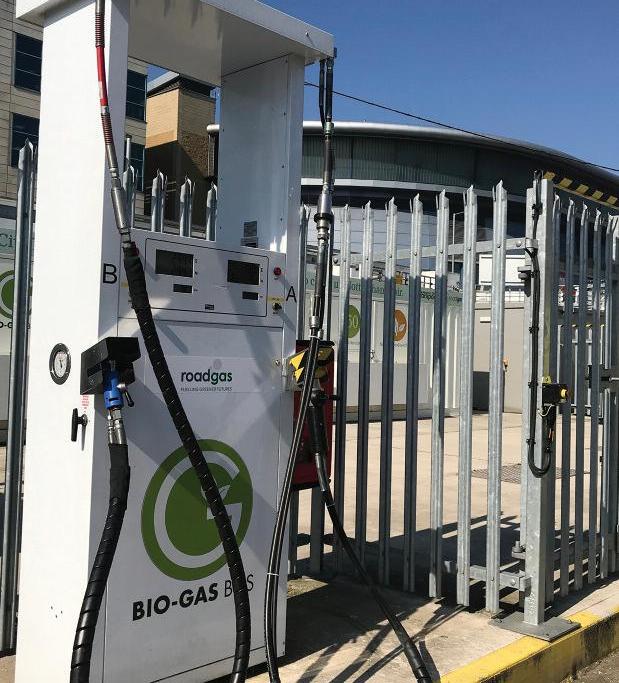
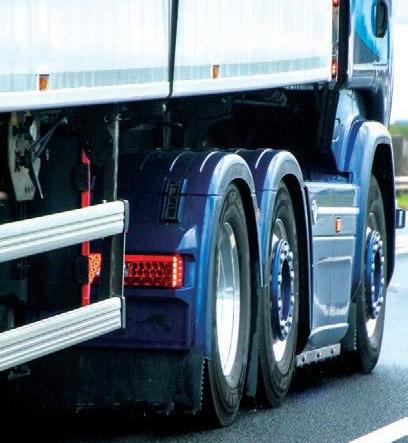
CHANGING PERCEPTIONS AND CREATING A GREAT PLACE TO WORK
Wellness spaces, wetlands and cycle routes may not be naturally associated with logistics parks, but they’re part of the appeal for workers at Magna Park Lutterworth.
There’s also a Starbucks, restaurants on site, while the current 10,000 employees are encouraged to car share and use public transport.
Gwyn Stubbings says: “It’s grown into its own cluster of business and if you look at the land uptake, it’s comparable to the town of Lutterworth, so we have to think about the types of amenities and recreation you’d get in those types of places. We want to attract new companies to the park and retain those already on site, so we want to make it a pleasant place to work.”
It’s just the latest move to change perceptions about the logistics industry away from dirty warehouse jobs to modern roles fully immersed in the latest technology.
Accountants, operations managers, marketing professionals and IT technicians are just some of the jobs in offices built within the warehouses.
The British Property Foundation’s Delivering the Goods report published in February 2020 found median salaries in logistics was £31,600 – some £6,700 higher than the average – and had increased from £28,000 in 2014.
Alex Reynolds, of Tritax Symmetry, says: “These are forward-thinking global companies on logistics parks with offices, R&D facilities and warehouses under one roof.
“They have very sophisticated HR, training and skills functions, while they’re increasingly bringing in hi-tech automation that requires the right people to operate it.”

